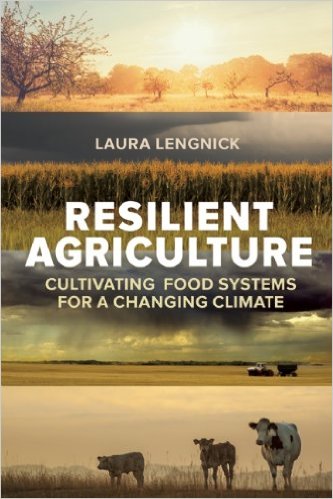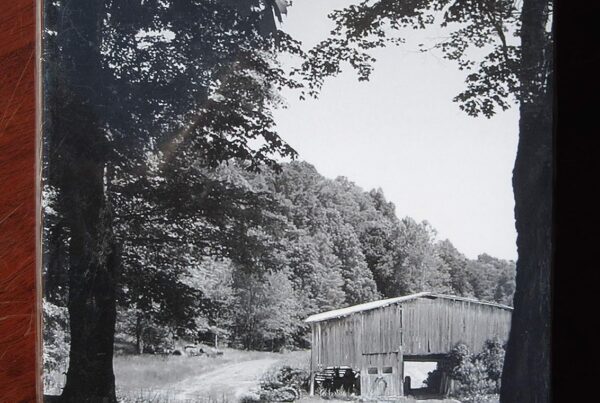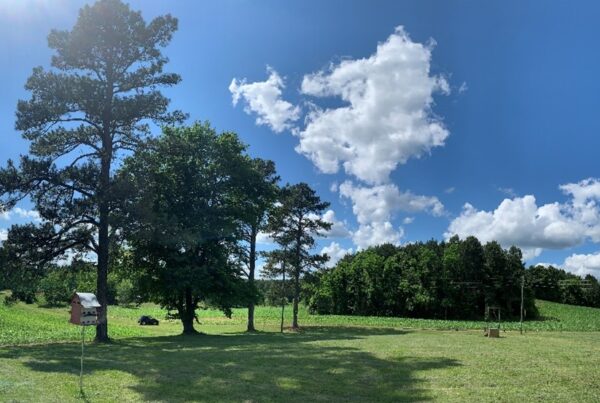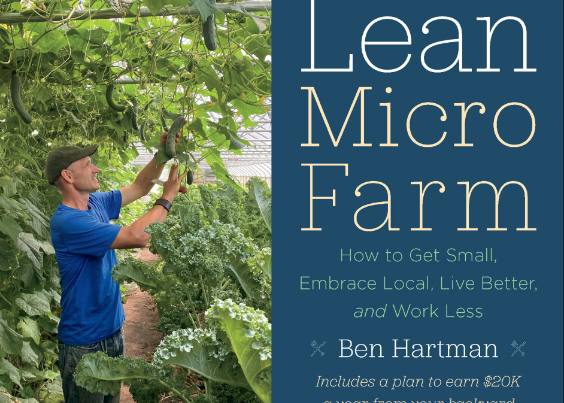
Book Review, Resilient Agriculture:
Cultivating Food Systems for a Changing Climate
Laura Lengnick. New Society Publishers
ISBN 978-0-86571-774-9
Laura Lengnick, who works as a consultant and educator in climate resilience, is doing valuable work to help farmers get ready for climate change. This is far from a doom-and-gloom book. Nor is it a “Blame Industry/Government” tome. It is a very practical and constructive aid to successful sustainable farming. She suggests viewing climate change as yet another production risk to assess and prepare for – a big one. We need to start with ourselves.
In Resilient Agriculture, Laura Lengnick uses her own extensive knowledge of the science and politics of climate change and her personal experience of growing food, along with interviews with award-winning sustainable farmers across the US to give us a both a basic framework for approaching the issue and many practical tips.
I also found moral support and help with thinking clearly about what could otherwise be a paralyzing topic: producing food in the face of an increasingly erratic and unpredictable climate. This major transformation is so hard to consider that at times I’ve thought “thank goodness I’m already in my sixties – it’s the younger people who will have to bear the brunt of coping with this mess.” I know that is neither a constructive nor a realistic approach – we each need to make our best effort if our species is to survive the wild changes and unprecedented obstacles ahead.
In the Southeast, farmers report more frequent summer droughts, more and hotter heat waves, increased intensity of hurricanes, and in general more frequent extreme weather events of all types, more often. This is what we need to be ready for, at the same time as we reduce our own carbon footprints and campaign for national changes. Starting around 1980, the length of the frost-free season increased across the US. In the SE, it became 6 days longer. Ours is the region with the smallest frost-free season change. On the other hand, the Southeast has seen a 27% increase in the amount of rain and snow dropping down as very heavy precipitation. The East has become a bit warmer and has heavier rainfall/snowfall, while the West has become hotter and has a smaller percentage change in the amount of heavy precipitation.
The framework of this book
Thinking about climate change using the framework presented in this book helps us focus on the components we have most control over.
The vulnerability of a farm is the degree to which it is susceptible to each adverse effect of climate change. It is a combination of exposure, sensitivity and adaptive capacity. Exposure and sensitivity acting together determine the potential impact of climate change. We can reduce exposure overall by reducing emissions and increasing carbon sequestration. These broad efforts are vital, but will have less immediate effects at a farm level.
As far as vulnerability, the most immediate key exposure (change in conditions) is water issues (too much and too little). Rising air temperatures (including night temperatures) and more extreme temperatures provide threats and some opportunities. Increasing CO2 levels will provide some positive effects such as faster crop growth. There are also effects we have barely begun to think about: different bugs and plant diseases; weeds which can grow faster than before; times of desperate water shortage, times of flooding; hurricanes and other strong winds; colder winter and spring temperatures affecting bud burst of fruit and nut trees.
Sensitivity and adaptive capacity are the factors we have more control over. Sensitivity is a measure of how much a given farm is affected by the conditions (exposures). For example, is the farm in a flood plain in a region that can expect more floods in future? What are the factors limiting the ability of the farm to adapt to climate change? Assessing the farm’s sensitivities provides a good starting point for planning adaptive strategies.
Adaptation is the method most successful in addressing the challenges of climate change at a local level. Adaptive capacity includes our individual capabilities, knowledge and options, and the operating context (your farm’s unique combination of economic, social and ecological conditions). As far as adaptive capacity, the main feature of that aspect is our personal capacity to respond and plan. Laura Lengnick says “Greater attention to climate as critical for decision-making is expected by future generations of producers.”
In some cases we have already been practicing some of the skills we’ll need: growing a diversity of crops and livestock; learning from our experience (record-keeping!), paying attention to the weather and learning to forecast our local weather; making plans we are prepared to change as conditions change, and having enough workers, seeds and machines to take advantage of smaller windows.
The interviews encompass farmers of vegetables, fruits, nuts, grains and livestock. Each production section includes five to ten farms in various parts of the country and ends with a summary of challenges to the adaptive capacity of farmers in that production area. Farmers report on changes they have observed in the past twenty years, whether those changes seem to be long term, and changes they have made to their farming practices as a way to improve their chance of harvesting good yields. Naturally I paid most attention to vegetable growing, and to farmers in the Southeast, to get some ideas on what changes I might wisely introduce.
Some vegetable growers noted the arrival of longer growing seasons, in particular, a longer fall season. Many refer to the need to improve irrigation systems and access to water supplies. Many also see a need to improve soil drainage and soil water-holding capacity. The diversity of vegetable crops many growers produce is a strength in that it spreads the risk. Whatever the weather, something will grow (surely?)
I also found the sections on other types of farming useful, noting that fruit and nut tree growers were looking at diversifying into annual vegetables because of problems with late frosts or insufficient chilling hours that can lead to a complete crop failure in a perennial. Grain farmers had very interesting advice about mixtures of cover crop seed, cocktails of 10 – 20 different cover crops, to increase the chance of improving the soil and gaining longer-term benefits of resilience.
I first heard Laura Lengnick speak at the Carolina Farm Stewardship Association conference in 2012. Her solution-focused presentation was “Is Your Farm Climate Ready?” She is one of the main authors of a USDA ARS report Climate Change and Agriculture: Effect and Adaptation.
(USDA Technical Bulletin 1935) Feb 2013. She also spoke at the August 2012 symposium of the Ecological Society of America, Climate change impacts on agricultural systems: She participates in the Climate Listening Project, a “storytelling platform for conversations on climate change resilience”.
Bill McKibben, author of Deep Economy writes in his endorsement of the book, “we must keep climate from changing too much – because there’s nothing even the best farmer can do to cope with a truly overheated planet.”
For another review of this book, see the New Society blog http://www.newsociety.com/blog/2015/Resilient-Agriculture-Planning-for-Climate-Change






